On August 9th, 2020, Prof. Guozheng Kang's team published a paper named “Phase field simulation on the grain size dependent super-elasticity and shape memory effect of nanocrystalline NiTi shape memory alloys” inInternational Journal of Engineering Science, a top journal in the field of engineering mechanics. NiTi shape memory alloy (SMA), as a typical smart and functional material, has been generally applied in aerospace, automotive, micro-electromechanical systems (MEMS), robotics, biomedical and some other fields (Jani et al., 2014) due to its unique super-elasticity (SE) and shape memory effect (SME) originated from the first-order solid-to-solid diffusionless and reversible thermos-elastic martensite transformation (MT), where the rearrangement of atoms results in a change of crystal structure and a generation of strain. Since the grain size (GS) is one of the most important microstructure parameters in polycrystalline materials, it can affect many mechanical properties of NiTi SMAs such as the capacity of SE, tensile strength, Young’s modulus, hardness, crack growth, fatigue life and so on.It has been recognized that grain refinement down to nanoscale is an effective way to improve the strength, stability and fatigue resistance of polycrystalline NiTi SMAs.
So far, the experimental and theoretical researches on the GS dependent inelastic deformation of NiTi SMAs mentioned above mainly focused on the macroscopic stress-strain response, while the microscopic observations for correspondent microstructure evolution have not been paid much more attention. Meanwhile, the existing continuum models cannot intuitively describe the microstructure evolution of NiTi SMAs during the inelastic deformation, even if the microstructure evolution is an important factor impacting the macroscopic mechanical response of them. Moreover, much attention has been paid to the GS dependent SE of NiTi SMAs, but few relevant researches involving the SME (OWSME and TWSME) of the alloys have been reported.
In order to comprehensively study the GS dependent SE and SME of nanocrystalline NiTi SMAs and reveal microscopic mechanism from the perspective of microstructure evolution, Professor Guozheng Kang's team from the School of Mechanics and Engineering, Southwest Jiaotong University has carried out relevant theoretical and numerical simulation work.
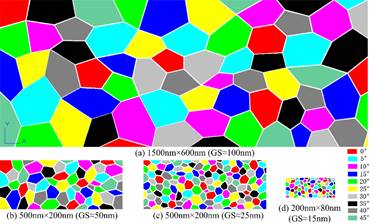
Fig. 1Polycrystalline simulation systems with different GSs.
Firstly, based on the classical Ginzburg-Landau’s theory, the free energy function of polycrystalline system is modified by introducing an extra grain boundary energy, and a new two-dimensional (2D) phase field model considering the continuous variation of temperature is proposed; by solving the phase field dynamics equation of order parameter in the established phase field model, the microstructure evolution during the inelastic deformation of nanocrystalline NiTi SMAs is simulated. The 2D polycrystalline systems with different GSs subjected to stress, temperature andthermo-mechanically coupled loadings are, respectively, simulated. Compared with the existing literature, the GS dependence of SE, complete OWSME (containing the process of heating) andstress assisted TWSME of nanocrystalline NiTi SMAs are comprehensively reported; moreover, the microstructure-dependent microscopic mechanism of such a GS dependence is fully revealed.
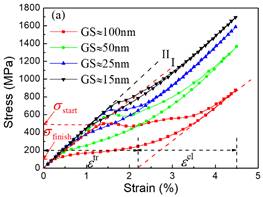
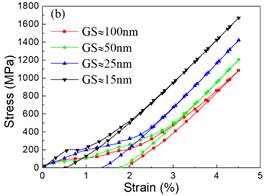
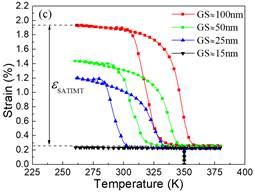
Fig. 2Simulated stress-strain and strain-temperature responses of the SE, OWSME andstress assisted TWSME of nanocrystalline NiTi SMAs with different GSs.
The simulated results show that: (1) For the SE, when the GS isrelatively large, the stress-induced MT and its reverse are achieved by the nucleation-expansion and reduction-disappearance of local martensite bands; but, with decreasing the GS, the MT and its reverse gradually become to be homogeneous (that is, without obvious local martensite bands occurred) in the polycrystalline system. (2) For the OWSME, with decreasing the GS, the austenite content in the initial martensitic polycrystalline system gradually increases; during the tension-unloading, the involved inelastic deformation mechanism is progressively converted from the martensite reorientation to the reversible MT. (3) For the stress assisted TWSME (with a constant stress of 100 MPa), the single martensite variant tends to be formed inside each grain during cooling due to the directionality of applied constant stress and the decrease of GS; the austenite content in the polycrystalline system at the lowest temperature increases gradually, and the reverse MT can be fully completed when the system is heated to the highest temperature. The further analysis indicates that, the degradation in the SE, OWSME andstress assisted TWSME of the nanocrystalline NiTi SMAs with the decrease of GS can all be attributed to that: with the reduction of GS, the proportion of un-transformable grain boundary increases while the transformable regions inside the grains decrease in the polycrystalline system, and the inhibition of grain boundary to MT also becomes stronger.

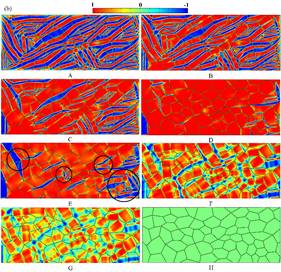
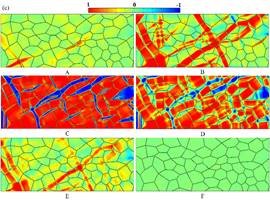
Fig. 3Phase field simulated results of the microstructure evolution in the processes of SE, OWSME andstress assisted TWSME of nanocrystalline NiTi SMAs with relatively large GS.
Compared with the existing literature, the GS dependence of SE, complete OWSME (containing the process of heating) and stress assisted TWSME of nanocrystalline NiTi SMAs are comprehensively reported; moreover, the microstructure-dependent microscopic mechanism of such a GS dependence is fully revealed. The simulated results demonstrate that the nano-crystallization method can provide a potential choice for manufacturing the polycrystalline NiTi SMAs with excellent thermo-mechanical properties.
This research is supported by the National Natural Science Foundation of China (NSFF) key project,“Macro- and microscopic experiments and theories for the thermo-mechanical coupled cyclic deformation and fatigue failure of shape memory alloys” (No.11532010). The authors of the paper include the doctoral student Bo Xu (the first author) in the class of 2016, Prof. Guozheng Kang (corresponding author) and associate Prof. Chao Yu.
In recent years, the research team “Constitutive Relations and Fatigue Fracture of Materials” led by Prof. Guozheng Kang has published more than 30 papers in the top journals of solid mechanics and metal materials, e.g.,Journal of the Mechanics and Physics of Solids,International Journal of Plasticity,International Journal of Solids and Structures,International Journal of Engineering Science,Acta Materialiaandso on, which has generated a great international academic influence.


